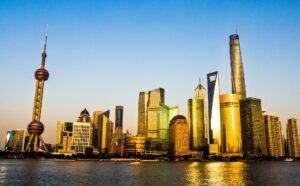Christmas 2022: At the end of the third year of the pandemic and after almost a year of war in Europe, it is time to take a look at the major lines of development in our supply chains. We are in the midst of a drastic change in the global economy. It’s time to reorganize our supply chains and seize the opportunities instead of freezing in the face of the risks!
Farshoring: Looking into the distance
Farshoring, relocating production to the Far East, namely China, or buying from suppliers there and closing down production in Europe, was a trend that was almost unbroken in the last 25 years until the start of the pandemic. The fact that some of the companies brought their procurement and production back to Europe could not change this, as the Total costs of ownership (TCO) for goods procured from the Far East were not always as significantly lower than those for goods procured from Europe as the pure purchase prices, which unfortunately many purchasing departments are still fixated on, would suggest.
Opinions changed at the start of the pandemic. In an expert survey conducted by Abels & Kemmner in May 2020, in the middle of the first wave of the pandemic, significant shifts in procurement markets back to Europe were expected. We are now more than two years further on and have learned a lot.
Many European suppliers also procure their preliminary products in China and in this way are also caught in the glue of the Chinese nomenklatura’s devastating pandemic policy. China is also increasingly acting as a “systemic competitor”, as the German government and the EU Commission so nicely put it. You could also say that it is trying to push through its form of “change through trade”: economic blackmail.
No trend towards reshoring despite the pandemic
Despite these developments, there is no evidence of a massive trend towards reshoring, i.e. a return to local production. What is necessary, however, is rightshoring and “reshoring”. The international division of tasks must be recalibrated. In some fields, automation makes it possible to relocate processes back to Europe and, from a TCO perspective, nearshoring is likely to be economically advantageous for some products. Manufacturing costs in the Far East have risen significantly in the meantime, customs duties, taxes, freight costs, quality problems, large inventories and long delivery times are pushing up landed costs considerably.
In our simulation projects for logistics optimization, it is becoming increasingly apparent that Asian sourcing no longer offers any economic advantages for certain items. For many and probably the majority of procured goods, the procurement markets will remain distant. The principle of comparative competitive advantage recognized by David Riccardo has proven its worth in the form of the international division of labour and has made the world much more prosperous over the last thirty years. This does not necessarily pose a problem for the resilience of our supply chains, as long as we position ourselves correctly and decouple ourselves from critical sourcing regions. This requires a relocation, a “reshoring”, to other favorable procurement markets that are usually far away from Europe.
“Umshoring” as protection against blackmail
This re-shoring is particularly important for commodities. We in Europe have hopefully learned this lesson in view of the energy crisis. There is no point in relocating or relocating the production of intermediate products as long as the mines, oil wells and gas deposits where the global supply chain begins remain in the hands of the major autocracies Russia and China. Many small autocrats from whom we procure distributed goods are much harder to blackmail and the idea of only trading with democracies is a child’s fantasy.
A major challenge for many companies, especially German companies, will be to become less dependent on China as a sales market and also to slow down the reorientation of these companies’ procurement markets. For many companies, decoupling from the Chinese sales market is likely to be almost impossible and yet it will increasingly happen over the next 25 years, as we are currently witnessing China’s golden economic years coming to an end and perhaps by Christmas 2042 we will be talking about the successful rise of Africa.
The world is changing, always has been and always will be – fortunately!


